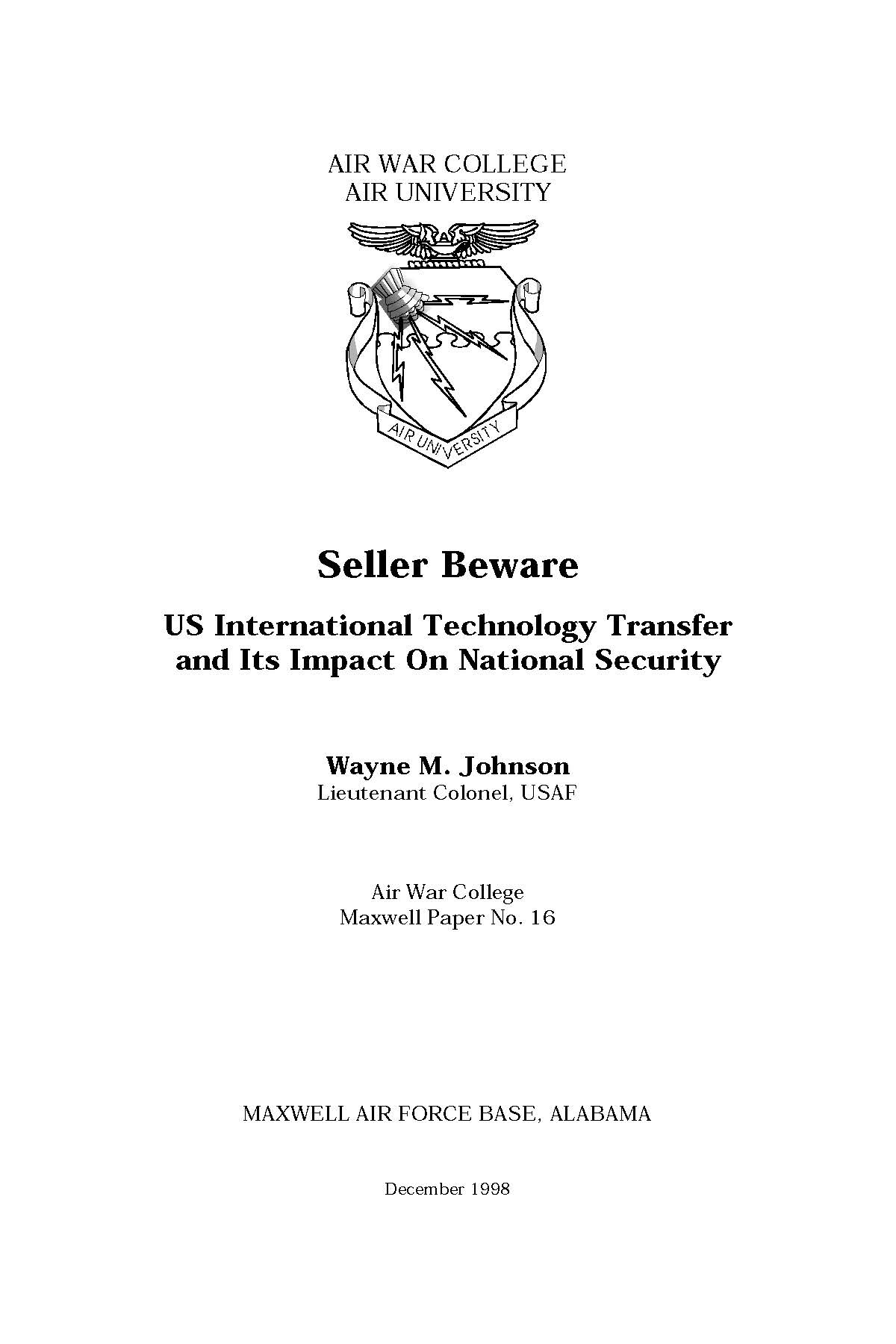 As was the case during the cold war, the national military strategy of the United States relies on technologically superior forces to achieve our objectives when the armed forces are called on to protect the United States and its interests. However, as the military downsizes, preserving a technologically superior force while also maintaining a robust defense industrial base becomes more difficult. One means the United States uses to preserve the industrial base is to maintain demand by selling our military goods to other countries. While foreign military sales (FMS) alone will not keep the US industrial base viable, they have become more significant than in the days of larger US defense procurements. In 1996, for example, FMS exceeded $10 billion. Indeed, FMS can spell the difference between continued existence and bankruptcy for some of our defense contractors. The perceived need to sell overseas while safeguarding US advanced technologies appears to be a conflicting goal because of the technology transfer involved. In this important study, Lt Col Wayne Johnson, USAF, argues that systematic tightening of interagency cooperation and better work on defining sensitive technology prohibitions are needed to maintain the US technological edge. He also maintains that the US government requires a new and disciplined export control process—not the cur -rent mosaic of rules, regulations, and perspectives that came out of the cold war, but a process that provides a revamped, systemic approach with consistent implementation. Colonel Johnson explores the problem of defining which technologies the United States is willing to transfer (military or dual-use) and the need to ensure that national security objectives do not take a backseat to economic expediency.
As was the case during the cold war, the national military strategy of the United States relies on technologically superior forces to achieve our objectives when the armed forces are called on to protect the United States and its interests. However, as the military downsizes, preserving a technologically superior force while also maintaining a robust defense industrial base becomes more difficult. One means the United States uses to preserve the industrial base is to maintain demand by selling our military goods to other countries. While foreign military sales (FMS) alone will not keep the US industrial base viable, they have become more significant than in the days of larger US defense procurements. In 1996, for example, FMS exceeded $10 billion. Indeed, FMS can spell the difference between continued existence and bankruptcy for some of our defense contractors. The perceived need to sell overseas while safeguarding US advanced technologies appears to be a conflicting goal because of the technology transfer involved. In this important study, Lt Col Wayne Johnson, USAF, argues that systematic tightening of interagency cooperation and better work on defining sensitive technology prohibitions are needed to maintain the US technological edge. He also maintains that the US government requires a new and disciplined export control process—not the cur -rent mosaic of rules, regulations, and perspectives that came out of the cold war, but a process that provides a revamped, systemic approach with consistent implementation. Colonel Johnson explores the problem of defining which technologies the United States is willing to transfer (military or dual-use) and the need to ensure that national security objectives do not take a backseat to economic expediency.
Author(s) • Lieutenant Colonel Wayne M. Johnson, USAF
Year • 1998
Pages • 34
ISSN • 2575-7539
AU Press Code • MP-16